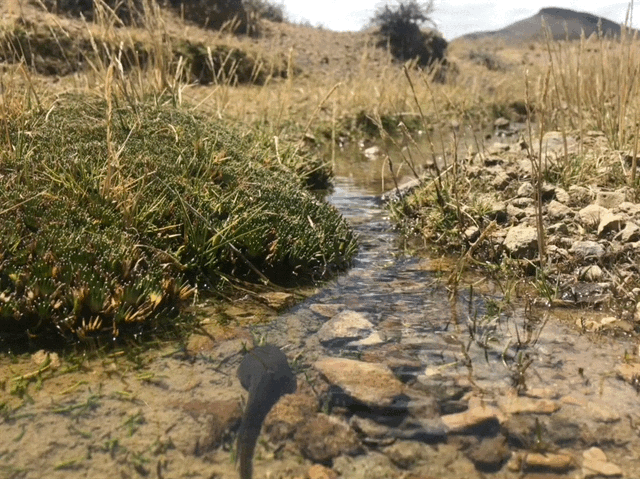|
For the month of October the lab traveled back to the high elevation grasslands at Pampas Galeras National Reserve in Peru to conduct research on Telmatobius tadpoles. As part of his doctoral thesis Kenneth Anderson is expanding on the work done here by Andrew Rubio investigating the ecosystem role of Telmatobius, and how that role is changing due to chytridiomycosis. While the Pampas Galeras National Reserve was founded to protect the vicuñas (a species of camelid prized for its extremely fine wool), it also protects native Telmatobius frogs which live in the streams throughout the reserve. Multiple species of Telmatobius frogs have suffered from major declines due to chytrid but the frogs at Pampas Galeras seems to be co-existing with the disease without massive declines. The effects of chytrid as an enzootic disease have been largely unstudied, so the goal of research on these frogs is to learn how chytrid changes the ecosystem function of these frogs. Telmatobius tadpoles are specifically useful for looking at this relationship because tadpoles do not die from chytrid. The fungus only grows on their mouthparts and at high levels of infection causes deformations. This is very useful for estimating infection levels in the field and it’s likely that the change to the mouthparts causes a change in diet for the tadpoles as well. We suspect that this change in diet, along with changes in energy and nutrient needs caused by disease will change how tadpoles cycle nutrients with their streams. To do this Kenneth, along with his dauntless field tech Yasmani Larota Calla, swabbed frogs for disease, and collected urine and feces of tadpoles for nutrient readings. Tadpole urine is easily collected by putting a tadpole in a bag and waiting for about an hour, the water is then filtered to separate the feces and brought back to the field station for ammonium chemistry in the field (using a Turner fluorometer). We’ll come back with another update once or data has been analyzed but we expect that chytrid will change the nutrient ratios in tadpole urine, and we expect that the amount of urine produced plays an important role in the nutrient cycling of these unique high elevation streams.
0 Comments
|
Archives
June 2024
CATENAZZI LABNews from the lab Categories |



 RSS Feed
RSS Feed